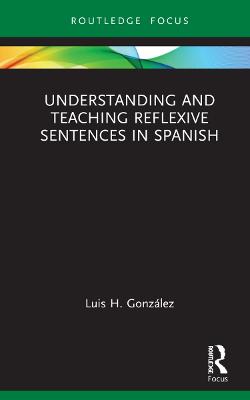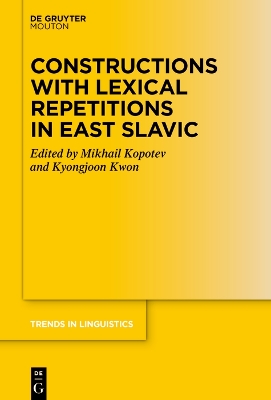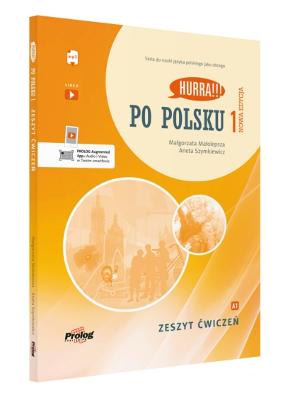Understanding and Teaching Reflexive Sentences in Spanish
 portes grátis
portes grátis
Understanding and Teaching Reflexive Sentences in Spanish
Gonzalez, Luis H.
Taylor & Francis Ltd
02/2022
82
Dura
Inglês
9781032101873
15 a 20 dias
226
Descrição não disponível.
List of tables
Acknowledgements
Chapter 1: Subject and direct object or verber and verbed?
1.1 Introduction
2.1 How verbed reveals a difference that subject hides
3.1 Sentences with three participants
Chapter 2: Turning reflexivization on its head
2.1. Introduction
2.2. Reflexivization: more than meets the eye
2.3. Reflexivization turned upside down
2.4. How Estela se parece a su mama is not an idiom; it is similar to Estela se sirvio un cafe
2.5. Does a reflexive pronoun replace the direct object/indirect object or the subject?
2.6. An intransitivizing pronoun replaces the verber, not the subject
2.7. Conclusions
2.8. Exercises
2.9. Answers to the exercises
Chapter 3: How the intransitivizing se accounts for true reflexive se, but not the other way around
3.1. The view from above: against the need for the ten to 15 different functions of se
3.2. You can drink up your coffee but you cannot *drink up coffee
3.3. Conclusions
3.4. Exercises
3.5. Answers to the exercises
Chapter 4: Other "functions" of se: Can telling your name in another language be an idiom?
4.1. On gone, goer, goner, fallen, dead
4.2. Can telling your name in another language be an idiom?
4.3. Can we, please, never ever again explain in a textbook for Spanish the accidental or unplanned se?
4.4. Conclusions
4.5. Exercises
4.6. Answers to the exercises
Chapter 5: Bringing together coreference reflexives, decausative reflexives, impersonal passives, and inherently reflexive verbs
5.1. How verber intransitivization brings together coreference reflexives, decausative reflexives, impersonal se, and inherently reflexive verbs
5.2. The 11 types of intransitivized sentences with a reflexive pronoun in Spanish (? 3.1) and in ten other languages
5.3 A smaller set of sentences intransitivized with an intransitivizing pronoun in 20 other languages
5.4. Conclusions
Index
Acknowledgements
Chapter 1: Subject and direct object or verber and verbed?
1.1 Introduction
2.1 How verbed reveals a difference that subject hides
3.1 Sentences with three participants
Chapter 2: Turning reflexivization on its head
2.1. Introduction
2.2. Reflexivization: more than meets the eye
2.3. Reflexivization turned upside down
2.4. How Estela se parece a su mama is not an idiom; it is similar to Estela se sirvio un cafe
2.5. Does a reflexive pronoun replace the direct object/indirect object or the subject?
2.6. An intransitivizing pronoun replaces the verber, not the subject
2.7. Conclusions
2.8. Exercises
2.9. Answers to the exercises
Chapter 3: How the intransitivizing se accounts for true reflexive se, but not the other way around
3.1. The view from above: against the need for the ten to 15 different functions of se
3.2. You can drink up your coffee but you cannot *drink up coffee
3.3. Conclusions
3.4. Exercises
3.5. Answers to the exercises
Chapter 4: Other "functions" of se: Can telling your name in another language be an idiom?
4.1. On gone, goer, goner, fallen, dead
4.2. Can telling your name in another language be an idiom?
4.3. Can we, please, never ever again explain in a textbook for Spanish the accidental or unplanned se?
4.4. Conclusions
4.5. Exercises
4.6. Answers to the exercises
Chapter 5: Bringing together coreference reflexives, decausative reflexives, impersonal passives, and inherently reflexive verbs
5.1. How verber intransitivization brings together coreference reflexives, decausative reflexives, impersonal se, and inherently reflexive verbs
5.2. The 11 types of intransitivized sentences with a reflexive pronoun in Spanish (? 3.1) and in ten other languages
5.3 A smaller set of sentences intransitivized with an intransitivizing pronoun in 20 other languages
5.4. Conclusions
Index
Este título pertence ao(s) assunto(s) indicados(s). Para ver outros títulos clique no assunto desejado.
Understanding and Teaching Reflexive Sentences in Spanish;se;reflexive sentences;Luis H. Gonzalez;Spanish;Pedagogy;Linguistics;second language teaching;second language learning;Indirect Object;foreign language learning;Intransitive Sentences;Vargas Llosa;DAT;Ivan Sag;IMPERSONAL PASSIVE;La Puerta;Verber Intransitivization;El Pelo;La Semana Pasada;El Pan;Reciprocal Sentences;UNACCUSATIVE Verbs;Abuela;Direct Object Reflexivization;PRES.;Las Puertas;Transitive Sentence;Son Las;La Viuda;Lauren Dressed;Cuando Los;Se Lo;Subject Reflexivization
List of tables
Acknowledgements
Chapter 1: Subject and direct object or verber and verbed?
1.1 Introduction
2.1 How verbed reveals a difference that subject hides
3.1 Sentences with three participants
Chapter 2: Turning reflexivization on its head
2.1. Introduction
2.2. Reflexivization: more than meets the eye
2.3. Reflexivization turned upside down
2.4. How Estela se parece a su mama is not an idiom; it is similar to Estela se sirvio un cafe
2.5. Does a reflexive pronoun replace the direct object/indirect object or the subject?
2.6. An intransitivizing pronoun replaces the verber, not the subject
2.7. Conclusions
2.8. Exercises
2.9. Answers to the exercises
Chapter 3: How the intransitivizing se accounts for true reflexive se, but not the other way around
3.1. The view from above: against the need for the ten to 15 different functions of se
3.2. You can drink up your coffee but you cannot *drink up coffee
3.3. Conclusions
3.4. Exercises
3.5. Answers to the exercises
Chapter 4: Other "functions" of se: Can telling your name in another language be an idiom?
4.1. On gone, goer, goner, fallen, dead
4.2. Can telling your name in another language be an idiom?
4.3. Can we, please, never ever again explain in a textbook for Spanish the accidental or unplanned se?
4.4. Conclusions
4.5. Exercises
4.6. Answers to the exercises
Chapter 5: Bringing together coreference reflexives, decausative reflexives, impersonal passives, and inherently reflexive verbs
5.1. How verber intransitivization brings together coreference reflexives, decausative reflexives, impersonal se, and inherently reflexive verbs
5.2. The 11 types of intransitivized sentences with a reflexive pronoun in Spanish (? 3.1) and in ten other languages
5.3 A smaller set of sentences intransitivized with an intransitivizing pronoun in 20 other languages
5.4. Conclusions
Index
Acknowledgements
Chapter 1: Subject and direct object or verber and verbed?
1.1 Introduction
2.1 How verbed reveals a difference that subject hides
3.1 Sentences with three participants
Chapter 2: Turning reflexivization on its head
2.1. Introduction
2.2. Reflexivization: more than meets the eye
2.3. Reflexivization turned upside down
2.4. How Estela se parece a su mama is not an idiom; it is similar to Estela se sirvio un cafe
2.5. Does a reflexive pronoun replace the direct object/indirect object or the subject?
2.6. An intransitivizing pronoun replaces the verber, not the subject
2.7. Conclusions
2.8. Exercises
2.9. Answers to the exercises
Chapter 3: How the intransitivizing se accounts for true reflexive se, but not the other way around
3.1. The view from above: against the need for the ten to 15 different functions of se
3.2. You can drink up your coffee but you cannot *drink up coffee
3.3. Conclusions
3.4. Exercises
3.5. Answers to the exercises
Chapter 4: Other "functions" of se: Can telling your name in another language be an idiom?
4.1. On gone, goer, goner, fallen, dead
4.2. Can telling your name in another language be an idiom?
4.3. Can we, please, never ever again explain in a textbook for Spanish the accidental or unplanned se?
4.4. Conclusions
4.5. Exercises
4.6. Answers to the exercises
Chapter 5: Bringing together coreference reflexives, decausative reflexives, impersonal passives, and inherently reflexive verbs
5.1. How verber intransitivization brings together coreference reflexives, decausative reflexives, impersonal se, and inherently reflexive verbs
5.2. The 11 types of intransitivized sentences with a reflexive pronoun in Spanish (? 3.1) and in ten other languages
5.3 A smaller set of sentences intransitivized with an intransitivizing pronoun in 20 other languages
5.4. Conclusions
Index
Este título pertence ao(s) assunto(s) indicados(s). Para ver outros títulos clique no assunto desejado.
Understanding and Teaching Reflexive Sentences in Spanish;se;reflexive sentences;Luis H. Gonzalez;Spanish;Pedagogy;Linguistics;second language teaching;second language learning;Indirect Object;foreign language learning;Intransitive Sentences;Vargas Llosa;DAT;Ivan Sag;IMPERSONAL PASSIVE;La Puerta;Verber Intransitivization;El Pelo;La Semana Pasada;El Pan;Reciprocal Sentences;UNACCUSATIVE Verbs;Abuela;Direct Object Reflexivization;PRES.;Las Puertas;Transitive Sentence;Son Las;La Viuda;Lauren Dressed;Cuando Los;Se Lo;Subject Reflexivization







